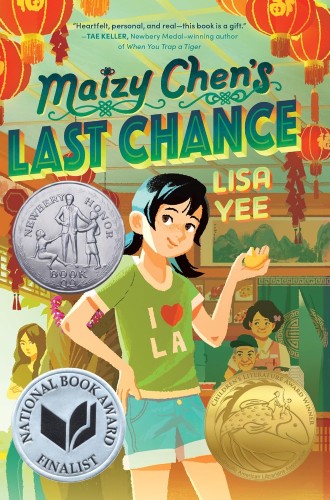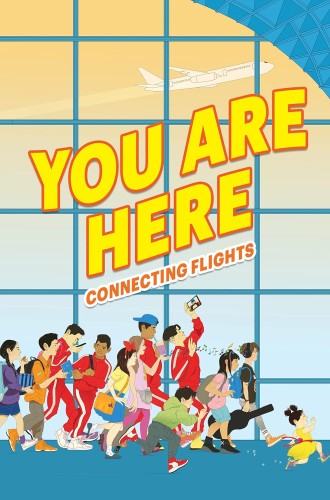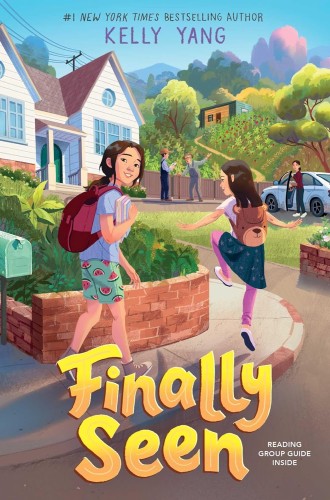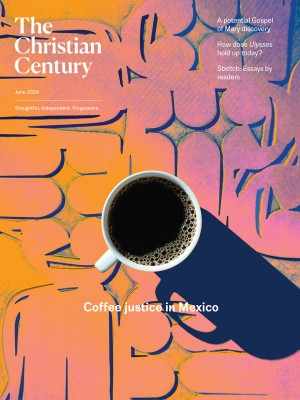
Maizy Chen’s Last Chance

You Are Here
Connecting Flights

Finally Seen
Living in Southeast Texas as a teenager, I belonged to one of the few Asian families in our small town. My parents owned a Chinese buffet, where I worked every Saturday and many evenings. Pentecostal groups, their women’s uncut hair in sweeping updos, settled on the place in droves after their evening services, just as we were about to close. A man wearing a “Jesus Is My Homeboy” baseball cap always came on weekends and ate unthinkable quantities of salt-and-pepper crab. When I came across Fifth Chinese Daughter, Jade Snow Wong’s autobiography about growing up in San Francisco’s Chinatown, and Amy Tan’s The Joy Luck Club, about immigrant mothers and their Chinese-American daughters, I clung to these books like scripture. I felt known through them, for more than just my family’s Americanized Chinese food.
Two decades later, I live far from my family’s old restaurant. Books featuring Asian American and Pacific Islander characters no longer feel like rare discoveries. I recently checked out one of Lisa Yee’s new chapter books, Maizy Chen’s Last Chance, from our public library for my husband to read aloud to our three half-Asian boys.
Read our latest issue or browse back issues.
Twelve-year-old Maizy spends the summer helping at her grandparents’ Chinese restaurant in Minnesota, serving “ancient Chinese recipes” like fried cream cheese wontons. Unlike my family, who are first-generation immigrants, Maizy’s family descends from a man named Lucky Chen who came to San Francisco in 1869. Over the summer, Maizy’s ailing grandpa tells her Lucky’s story of finding work in a new country, confronting anti-Chinese violence, and eventually establishing himself as a valued resident of Last Chance, Minnesota. Meanwhile, Maizy encounters modern forms of racism and finds a community in her grandparents’ town.
Yee’s book started me down a rabbit trail of reading other middle-grade fiction featuring Asian American characters. It was like the starved immigrant girl in me finally sat down to an all-you-can-eat literary buffet cooked up just for her. These are the kinds of stories I wish had been available to me growing up.
In You Are Here: Connecting Flights, Ellen Oh assembles 12 short stories by AAPI authors, all set in a Chicago airport as bad weather causes flight delays and friction among travelers. The main characters in each story face conflicts between how they’ve been socialized to act—quiet, compliant, always obedient to elders—and what they feel is right and true to themselves.
Some characters encounter explicit racism, like when a woman in a pink sweater comments, “Just our luck that we’d get stuck behind these people. They slow everything down.” This is said about Paul, who is traveling to Thailand with his family. His grandma is carrying his dead grandfather’s ashes in a coffee can, which causes a commotion at the security checkpoint.
Then there are the expected comments—“Hopefully they go back to their own country and stay there”—and overt aggressions, like when Henry, a Korean American boy with autism, watches two other boys walk up to him, snickering, trying to knock him off-balance.
One story, by Traci Chee, stood out to me for articulating the many small, almost unnameable cuts that come with growing up Asian American. Natalie is a Japanese American girl joining her best friend Beth’s family on vacation. Beth’s father calls it their “Annual Martin Independence Day Cross-Country Extravaganza,” which stirs up a weird feeling for Natalie, “sort of flustery and twisted up.” Natalie’s family doesn’t do hot dogs or fireworks, Mr. Martin’s definition of a “good summer celebration.” Her favorite Independence Day food is her grandma’s somen salad, but she doesn’t mention this, for fear of seeming impolite.
Though Natalie tries to let the feeling fizzle away, it only intensifies as the day progresses. Mr. and Mrs. Martin make another careless comment about an Asian kid who gets his finger stuck in a chair at the food court. Beth, who is White, blithely shows off her Japanese language skills, while Natalie feels she can’t walk around without drawing suspicion. “It wasn’t Beth’s fault, of course, but it was another of those small things, accumulating around Natalie little by little like dozens of tiny stones,” writes Chee. By the end of the story, Natalie is able to name the feeling as “something-is-weird-and-bad-and-it-has-to-do-with-race.” Seeing this naming gave the immigrant girl in me a palpable sense of relief. It’s not just me. It’s real.
Finally Seen is one of Kelly Yang’s many works. In it, ten-year-old Lina Gao joins her parents and younger sister in Southern California after living with her grandmother in Beijing for five years. Lina’s family has taught her to “act invisible, don’t create trouble.” Lina’s own struggles with English pronunciation push her deeper into a protective shell.
At Lina’s new school, her beloved teacher picks a book centering an AAPI character to read aloud, which a classmate’s parent calls “divisive.” In a poignant scene, Lina speaks up at a school board meeting about why the book matters to her. In halting English, she declares, “For me, this book is mirror. For other kids, it is sliding door. A door to see real life.” I’ll be honest: I choked up here.
If the stories we tell ourselves shape our sense of what is possible, then these books give young readers today broader possibilities than I could have imagined as a Chinese immigrant girl working at the Great Wall restaurant in Texas in the early aughts. For my three mixed-race children, I hope these stories offer them more-sophisticated categories and precise language at an earlier age for the race-tinged situations they already encounter. Though race may be a social construct, how we navigate it has world-shaping power.
Reading these stories also helps us imagine the possibility of bridging the chasms of misunderstanding, pain, and outright animosity that characterize so much of American social life. All three books contain scenes in which people perpetuating racist attitudes get their comeuppance. Though there is always some satisfaction in these outcomes, for me as a reader there is also the risk of enjoying retribution over transformation. Sure, the woman in the pink sweater gets publicly shamed for her abhorrent posture toward AAPI people. But what’s next for her? Does she change?
This is what I would like to see more of in AAPI fiction, for any age group. How can the narrative move beyond naming the feeling and calling out the wrong (which usually happens to characters who are depicted in two-dimensional ways) to giving some of the characters who acted hurtfully and unjustly their humanity back, too? What’s their backstory?
I see authors reaching toward that full relational loop in these stories. At the end of Finally Seen, Lina meets her classmate Jessica (whose mother called the class read-aloud “divisive”) at an ice cream truck, and they exchange book recommendations. In You Are Here, Natalie has a conversation with Beth about misappropriating elements of Japanese culture. Beth acknowledges that she hasn’t had to think about race, authenticity, and belonging the way that Natalie has had to all her life. This is the difference between what activists have named “calling out” (which leads to rupture) versus “calling in” (which leads to repair). Often, both are needed.
I’m excited about the direction of AAPI children’s fiction. There’s no one right narrative, as the many stories out there display. Taken together, they help us imagine and enact a society where children and adults of all races thrive together. And they help the immigrant girl in me feel a little less alone.





